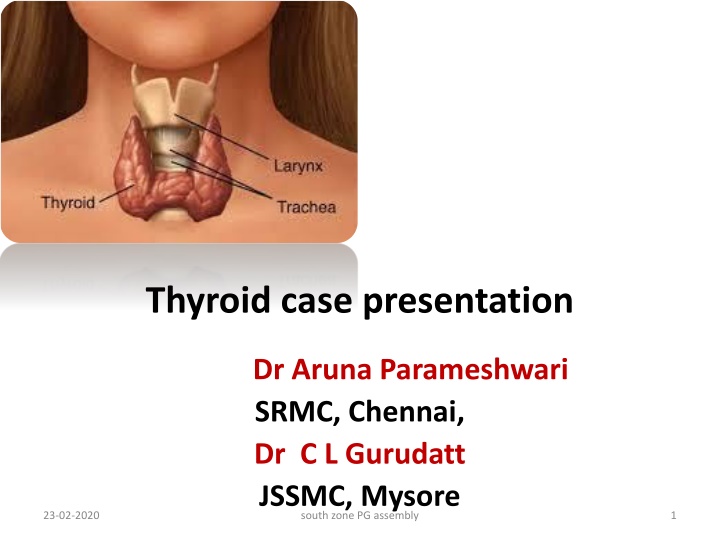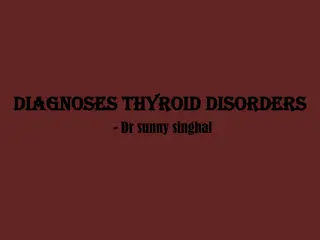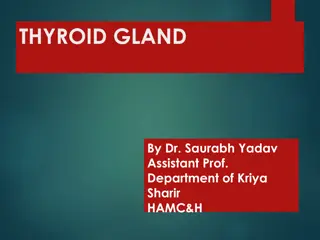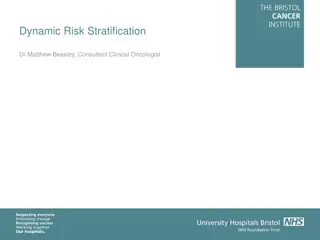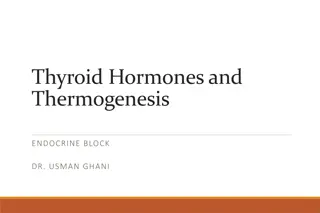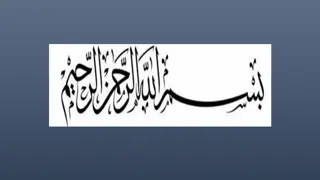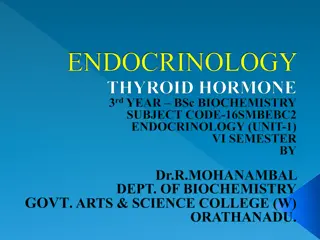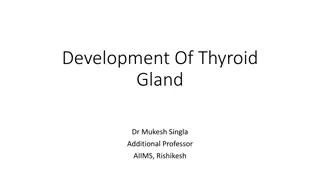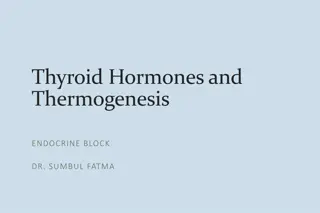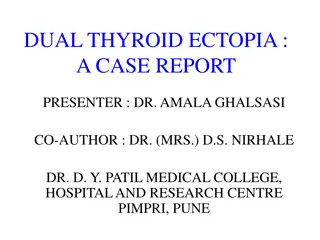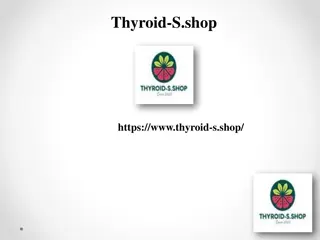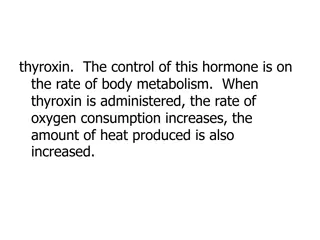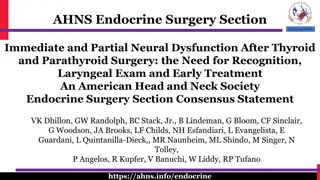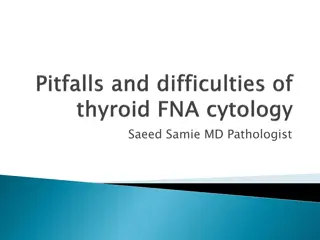Thyroid Case Presentation and Examination Methods Overview
This presentation discusses a case of a 48-year-old woman with a multinodular goiter scheduled for total thyroidectomy, highlighting symptoms, drug therapy implications, and examination methods like Lahey's and Crile's methods. The importance of history-taking, differentiation of primary and secondary hyperthyroidism, and considerations for anesthesia in hyperthyroid patients are also emphasized.
Download Presentation

Please find below an Image/Link to download the presentation.
The content on the website is provided AS IS for your information and personal use only. It may not be sold, licensed, or shared on other websites without obtaining consent from the author.If you encounter any issues during the download, it is possible that the publisher has removed the file from their server.
You are allowed to download the files provided on this website for personal or commercial use, subject to the condition that they are used lawfully. All files are the property of their respective owners.
The content on the website is provided AS IS for your information and personal use only. It may not be sold, licensed, or shared on other websites without obtaining consent from the author.
E N D
Presentation Transcript
Thyroid case presentation Dr Aruna Parameshwari SRMC, Chennai, Dr C L Gurudatt JSSMC, Mysore south zone PG assembly 23-02-2020 1
Case scenario A 48 years old woman with multinodular goiter has palpitations, tremors, dyspnoea,and dysphagia. She is posted for total thyroidectomy. 23-02-2020 south zone PG assembly 2
1. What other information you would like to know in the history? 1. Duration of the swelling and development of symptoms. Differentiate Primary and secondary hyperthyroidism Longer the duration - chances of tracheomalacia and malignancy 23-02-2020 south zone PG assembly 3
2. Difficulty to breath while sleeping Stridor in a particular position do not allow the patient to lie down in that position during induction 3. Drug therapy and anaesthetic implications beta blockers Carbimazole Propyl thio uracil 23-02-2020 south zone PG assembly 4
Duration of drug therapy Improvement in the symptoms after the drug therapy. Anaesthetic implications 4. Any muscle weakness Hyperthyroid patients especially Grave s disease patients can have myasthenia 23-02-2020 south zone PG assembly 5
2. What are the Different methods of examination of thyroid Lahey s method Cryle s method Pizzello s method 23-02-2020 south zone PG assembly 6
Laheys method for examination of each lobe of the thyroid. The examiner stands in front of the patient. In order to palpate the left lobe , thyroid gland is pushed to the left from the right side, to make the lobe more prominent and palpated with the other hand. The opposite manuvere is done for the right side. 23-02-2020 south zone PG assembly 7
Crile (Junior) method Slight enlargement of the thyroid gland or the presence of nodules in its substance can be appreciated by simply placing the thumb on the swelling while the patient swallows. 23-02-2020 south zone PG assembly 8
Pizzillos method Done in case of obese and short necked individuals where inspection of thyroid gland becomes difficult. In this method the patient is asked to place her hands behind the head and asked to push her head backwards against the clasped hands on the occiput. 23-02-2020 south zone PG assembly 9
3. Why getting underneath the swelling is important to know? To rule out retrosternal extension Pemburton s test how to do it? Patient is asked to rise his upper limbs above his head with the arms touching the ears. If there is substernal extension, due to the venous obstruction at the thoracic inlet, the patient will have congestion of the face and goes for distress. 23-02-2020 south zone PG assembly 10
4. What are the importance of Kochers test and Berry s sign? Kocher s test: Slight pressure on the lateral lobes producing stridor is kocher s test. This will be positive when thyroid swelling has compressed the trachea from both sides giving rise to scabbard trachea. Importance a. Smaller size of ETT b. ETT should be placed beyond the narrowing 23-02-2020 south zone PG assembly 11
Berrys sign: Malignant thyroid engulfs the carotid sheath completely so that no pulsation of the artery can be detected. This is Berry s sign. A benign swelling of the thyroid gland merely displaces the carotid sheath backwards where the pulsation of the carotid artery can be felt 23-02-2020 south zone PG assembly 12
5. What are the different eye signs in Grave s Orbitopathy? Von Graefe s sign lagging behind of the upper eyelid when the patient looks downward. Stellwag s sign - retraction of the upper eyelid with infrequent blinking . Joffroy s sign absence of wrinkling of the forehead on looking upwards with the face inclined downwards. Dalrymple s sign - sclera visible above cornea Moebius sign absence convergence of eye balls 23-02-2020 south zone PG assembly 13
6. Why patients with goitres are considered to have a difficult airway? 1. Any huge thyroid swelling can produce an antero posterior compression and hence can produce difficult mask ventilation once the patient becomes unconscious and the complete weight of the gland falling on the trachea producing obstruction. 23-02-2020 south zone PG assembly 14
2. Difficulty in introducing the laryngoscope as the tumour may come in the way. 3. Any lateral deviation of the trachea will distort the anatomy of the larynx and produce difficult visualization. 23-02-2020 south zone PG assembly 15
4. Lateral deviation of the trachea and larynx will produce improper positioning of an LMA . This will make a difficulty in ventilating the patient using a supraglottic device and also produces difficulty in intubating the patient using ILMA. 5. Presence of the swelling over the front of the neck will produce an impossible access for surgical airway and retrograde wire intubation. 23-02-2020 south zone PG assembly 16
7. What is the importance of sleeping pulse rate and how is it recorded? She should be well sedated to ensure that recording the pulse does not wake her up. Severity of hyperthyroidism Mild 80 - 90, Moderate - between 90-110 or Severe - above 110/min . 23-02-2020 south zone PG assembly 17
8. What Investigations are required? Haemoglobin Total count and differential count ECG X-ray neck AP & Lateral CT scan Liver function tests Indirect laryngoscopy 23-02-2020 south zone PG assembly 18
Thyroid function tests T 4 8-12 micro gm/dl T 3 - 70 to 195ng/dl TSH 2 5 micro I U/ml 23-02-2020 south zone PG assembly 19
9. Describe the Steps of thyroid hormone synthesis Absroption of iodine from GI tract & conversion to iodide Iodide trapping Oxydation of iodide Organification and coupling Storage and release 23-02-2020 south zone PG assembly 20
10 . What are the Differences between T4 & T3? T4 T3 100% released from thyroid Half life 7days Less active 20% released from thyroid, 80% peripheral conversion of T4 to T3 Half life -24 hours More active 23-02-2020 south zone PG assembly 21
11. How do you prepare a hyperthyroid patient for surgery? All patients are first treated with antithyroid drugs & Beta blockers for 6-8wks till made euthyroid. Lugol s iodine 5% iodine in 10% potassium iodide 8mg iodide/drop Dose 3-5 drops thrice a day. Advantages Reduces the size of the swelling Decreases the vascularity Makes the gland more firm. 23-02-2020 south zone PG assembly 22
12. What is Wolff Chaikoff effect & Jade Basedow effect Iodide decreases T3 & T4 synthesis by inhibiting iodide oxidation and organification Wolff Chaikoff effect or thyroid constipation. Iodine to be given for not more than 14 days before the surgery. If given for more days , can produce a recurrence of hyperthyroidism Jade Basedow effect or thyroid escape. 23-02-2020 south zone PG assembly 23
13. How do you premedicate the patient? Oral diazepam 10mg in the previous night and 10mg early in he morning. beta blockers and antithyroid drugs are continued on the day of surgery I.V line is taken with 18G cannula placed over the left hand / forearm under LA cover with a long connector or extension for easy access during surgery. Inj fentanyl 1-2 g/kg and inj midazolam 0.01- 0.02 mg/kg given intravenously before induction. 23-02-2020 south zone PG assembly 24
14. What are the different monitors used? SPO2, NIBP, ECG in lead II, temperature monitoring, ETCO2, peripheral nerve stimulator. 23-02-2020 south zone PG assembly 25
15. What anaesthetic preparations to be done before induction? A difficult airway cart containing LMA, ILMA, I- GEL, fibreoptic bronchoscope, optical stylet , gum elastic bougies to be kept ready. 2 working laryngoscopes and the endotracheal tubes 1-2 sizes smaller than required and stillettes to be kept. 23-02-2020 south zone PG assembly 26
In anticipating thyroid strom 4 units of cold saline for I.V infusion and ice cubes to be kept ready in the refrigerator. Esmolol, propranolol, hydrocortisone, propylthiouracil/ carbimazole, ryle s tube to be kept on the work station. One unit of crossmatched packed cells also to be arranged. 23-02-2020 south zone PG assembly 27
16. How is the patient induced? I.V. induction is the first choice. If difficult intubation is anticipated then inhalational induction is preferred. If patient gives history of obstructive symptoms and snoring, then awake intubation is preferred. 23-02-2020 south zone PG assembly 28
17. Which IV induction agent is ideal? Thiopentone is the induction agent of choice because of thio group producing antithyroid effect. Propofol also can be used. The advantages are - decreased sympathetic response to laryngoscopy and intubation, antiarrhythmic effect and decreased incidence of post op nausea and vomiting. 23-02-2020 south zone PG assembly 29
18. Any specific type of endotracheal tube is preferred? A kink resistant armoured tube (reinforced tube) is the ETT of choice for head and neck surgeries, with changes in neck position. North pole oral tracheal tubes are an alternative as they keep the respiratory filter away from the surgical field. 23-02-2020 south zone PG assembly 30
19.Is there any role for LMA in thyroid surgeries? The advantage of using LMA and maintaining the patient on spontaneous ventilation will be monitoring of the movements of vocal cords in response to stimulation of recurrent laryngeal nerves. Relative contraindication to the use of LMA are tracheal narrowing and/or deviation 23-02-2020 south zone PG assembly 31
20. What are the precautions to be taken during intubation ? It is necessary to make sure that the bevel of the tube is beyond the tracheal narrowing. Otherwise, during surgery due to the pressure exerted by the surgeon it may become impossible to ventilate the patient. So an intentional endobronchial placement is done and then the tube is gradually withdrawn till one hears breath sounds on either side. Prevents auto extubation during positioning 23-02-2020 south zone PG assembly 32
Suppression of intubation response Proper fixation of the tube is very important. 23-02-2020 south zone PG assembly 33
21. What is the position used for thyroidectomy and its importance? Patient is positioned with a sandbag between the shoulder blades and the head resting on a padded horseshoe, so that the neck is extended. - auto extubation 23-02-2020 south zone PG assembly 34
Head end of the table is elevated by 25 and the arms are placed by the side, as the surgeon will need to stand on either side of the patient. Head end elevation of the table is mainly done to assist venous drainage away from the site of surgery. - hypotension air embolism 23-02-2020 south zone PG assembly 35
22. How should the patient be maintained during surgery? Patient should be maintained with sufficient depth of anaesthesia as any lighter planes can produce complications like dysrhythmias and thyroid storm Patient should be ventilated with O2, N2O and volatile anaesthetics preferably isoflurane or sevoflurane. Halothane to be avoided as it can produce sensitization of myocardicum and cause dysrhythmias. 23-02-2020 south zone PG assembly 36
Continuous monitoring of ETCO2 is necessary to avoid hypo or hypercarbia as both can induce dysrhythmias. Patient should be normoventilated. 23-02-2020 south zone PG assembly 37
23. What are the intraoperative complications in these patients ? Haemorrhage - when the gland is very large Dysrrhythmias sinus tachycardia, SVT & atrial fibrillation Air embolism Thyroid storm delayed recovery from muscle relaxants 23-02-2020 south zone PG assembly 38
24. What is thyroid storm or hyperthyroid crisis? Thyroid storm is a life threatening exacerbation of hyperthyroidism, characterized by abrupt onset and precipitated by stress e.g. surgery , infection or trauma. 23-02-2020 south zone PG assembly 39
25. What are the Clinical features of thyroid storm Fever, increased CO2 production, acidosis, hyperventilation CVS - tachycardia, arrhythmia, CCF , shock. CNS - agitation, tremor, delirium coma GIT - diarrhoea, abdominal pain, vomiting 23-02-2020 south zone PG assembly 40
26. How do you recognize hyperthyroid crisis under anaesthesia? Early exhaustion of soda lime, Canister becoming very hot, Hyperpyrexia, Increased ETCO2 , Patient requiring increased muscle relaxants and anaesthetics, Unexplained tachycardia and dysrrythmias, 23-02-2020 south zone PG assembly 41
27. How do you manage thyroid crisis? Reduction of circulating thyroid hormone levels. Inhibition of the peripheral effects of circulating thyroid hormones Supportive care Treatment of the underlying precipitating event. 23-02-2020 south zone PG assembly 42
28. What are the causes of stridor after extubation? Recurrent laryngeal nerve palsy Tracehomalacia Larngospasm Laryngeal oedema Hypocalcemic tetany After 2-3 hours - haematoma 23-02-2020 south zone PG assembly 43
29. How do you manage stridor as a result of bilateral abductor palsy? Patient should be reintubated with a smaller tube using succinylcholine After 24 hours trial extubation For Tracheomalacia - tracheostomy 23-02-2020 south zone PG assembly 44
23-02-2020 south zone PG assembly 45
